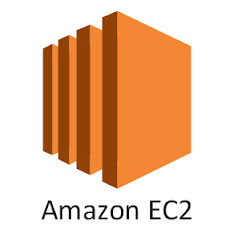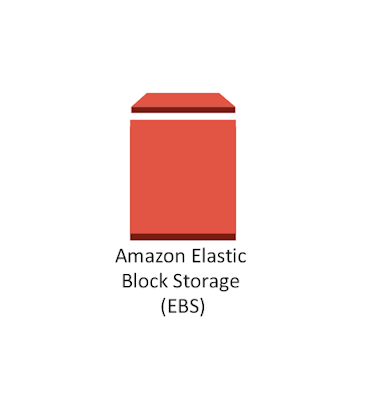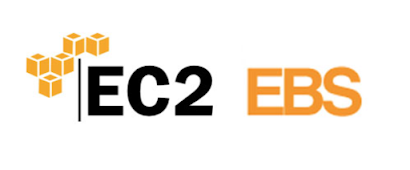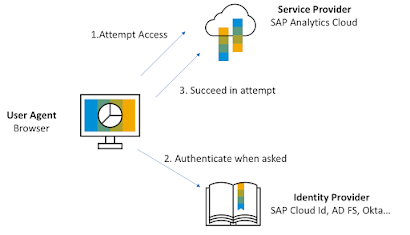Hey Bloggers,
Welcome to this amazing bogspot, where you can find interesting blogs about technology and gaming. In this blog you can see some fascinating facts about AWS, and also you will know about the much information of AMAZON WEB SERVICE ( AWS ).

AMAZON WEB SERVICE ( AWS )
In this tutorial, you may find basic and some advanced concept of this AWS. In this further details of AWS, We can see Introduction, Global Infrastructure, Features of AWS and also Database services, Etc..
So, let's get started towards AWS.
WHAT IS AWS?
AWS is stands for AMAZON WEB SERVICES, which uses distributed IT infrastructure to provide different IT resources on demand. It provides different kinds of services, such as, Infrastructure as a service ( IaaS ), Packaged Software as a service ( SaaS ), Platform as a services ( PaaS ).
For the advantages of different IT infrastructure, AWS launched A cloud computing platform. Many company believe in the IT infrastructure of AWS, because it is reliable and useful, not only but also, They provide the best services.
USES OF AWS
1. Companies like, architecture uses AWS services for get high computing rendering of construction prototype.
2. A media company use this web service because it provide various types of content for better creator.
3. AWS can also help small company to expand their business at higher level and increase their financial department.
4. Due to AWS, many companies provide training and workforce for employees.
AWS FEATURES
There are 5 features of AMAZON WEB SERVICES.
1. COST EFFECTIVE
2. FLEXIBILITY
3. SECURE
4. SCALABLE AND ELASTIC
5. EXPERIENCED
1. FLEXIBILITY
FLEXIBILITY become a difference between AWS and Tradition IT models. The flexibility of AWS allows us to choose the programming model, project , Technologies and Operating system, So we do not have to learn new various things at a time.
Building application in AWS are Like building applications to the cloud is easy, and cost-effective. The flexibility of AWS is a great asset for organization to deliver different product in given address with in time.
2. COST- EFFECTIVE
Cost play vital role in IT infrastructure for delivering IT solution. The cloud provides he IT infrastructure on demand, which is main thing for companies. In AWS, you are not limited to a set amount of resources such as storage, Bandwidth or computing resources, which is difficult to prediction of resources. Therefore, It maintain the right balance of resources.
It has the ability to respond the changes more quickly, and no matter whether the changes more quickly and small. It brings new opportunity in IT department, and also increase the revenue of the company.
3. SECURE
AWS provide it's best security to secure your important data. AWS incorporates the security into services and documents to describe how they use the security features. AWS provide end to end security and end to end privacy.
It maintains integrity and availability of your data, which is the most importance factor of the AWS. The provide three types of Security,
1. PHYSICAL SECURITY
2. SECURE SERVICES
3. DATA PRIVACY
This all security is important in AWS, which provide to secure an enormous data in AWS.
4. SCALABLE AND ELASTIC
Scalability in AWS has the ability to scale the computing resources up or down, when demand increase and decrease. The AWS cloud is important for implementing short-jobs and intervals. Elasticity load balancing and scalability automatically scale your AWS computing .
IN some IT companies, Scalability and elasticity were calculated with investment and infrastructure while in a cloud, Scalability and elasticity provide savings and improved ROI ( Return On Investment ).
5. EXPERIENCED
In this present time, enormous people use AMAZON platform because of trust. AWS has built an infrastructure based on lessons learned from over sixteen years experience, managing multi billion-dollar company AMAZON.COM business. AWS has been evolved since 2006, serving millions of customers worldwide.
AWS WORLDWIDE INFRASTRUCTURE
AWS is cloud computing platform, which is spread in worldwide. AWS is available in 24 Region and 72 more availability zones in 2019.
The following components are important in AWS infrastructure.
1. REGION
2. EDGE LOCATION
3. AVAILABILITY ZONES
4. REGIONAL EDGE CACHES
1. REGION
Region is geographical area, which acquire the whole area of infrastructure. Each region contains two more availability zone, which are connected through LINKS and METRO FIBERS. It is collection of data center, which are completely isolated from other regions.
2. EDGE LOCATION
Edge location is mainly use of Amazon's content delivery network ( CDN ). Edge location are more than region. In this time, more than 150 Edge locations located. It is located in the major cities of nation. Edge locations are the endpoints for AWS used for caching content.
3. AVAILABILITY ZONES
An availability zones can be several data center, but if they are close to each other, they are counted as 1 availability zone. In any availability zone, the data center, firewalls, multiple servers, switches, etc.. That thing, which interect with cloud data in centers.
4. REGIONAL EDGE CACHE
The EDGE location and is now known as REGIONAL edge cache. A regional cache data has a large than an individual edge location. The data is retained in the Regional edge, whenever the data is removed from the edge location.
AWS ACCOUNT IDENTIFIERS
AWS have two types of unique account ID
1. AN AWS ACCOUNT ID
2. A CANONICAL USER
1. AWS ACCOUNT ID
AWS account ID is a 12 digit number like, 251545401387, which can be used to construct Amazon Resource Names ( ARNs ). To find AWS account ID, just click on AWS management console.
2. A CANONICAL USER ID
A canonical user ID is 64-bit hexadecimal encoded with 256-bit number. This user ID is to access the bucket policy for cross account. It is used in AMAZON S3. Cross account means that AWS account can access resources in another AWS account.
AWS IAM
IAM means IDENTITY ACCESS MANAGEMENT, Which allows you to manage users and their access in AWS account. Due to IAM, organization can manage the user data, Security Credentials, keys and permission, which control the resource of AWS. Without IAM it become hard to handle billions of data and accounts. Many times, without the help of any humankind, it create own billing process and accept the orders.
AWS identity and access Management is a web service that enables Amazon Web Services customers to manage users and user permission in AWS.
ASPECTS OF IAM
1. Shared access to your AWS account
2. Identity Federation
3. Multi factor Authentication
4. Granular Permission
5. Networking Control
6. Support PCI DSS compliance
PCI DSS - PAYMENT CARD INDUSTRY DATA SECURITY STANDARD
7. Free to Use
8. Centralised control of your AWS account
9. Permission based on Organizational group
10. Eventually Consistent
Generally, there are 12 features, but rightnow we don't have much information about 2 other aspects. This all Features are important in IAM of AWS.
AWS EC2 ( KEYSTONE )
Generally, EC2 is also called ECC, because it means AMAZON ELASTIC COMPUTE CLOUD. It provides compute capacity in the cloud, which is resizable. AWS ECS reduces the time according the specification. Amazon EC2 provides the developers with the tools to build resilient applications that isolate themselves from some common scenarios.
It can increase the capacity of cloud. Online pay is also based on ECS in amazon rather than physical servers. In future, It will change the economy of computing cloud.

EC2 PRICING OPTION
It provide some option of pricing in AWS. It provide that option with advanced technology and that's why no one can hack this EC2.
1. ON DEMAND
It allow you to pay the fixed rate within in hour or sometimes in second with no negotiation.
2. RESERVED
It make reservation with amazon, that you should pay in any given time. Usually, the contract can be for 1 or 3 years. It has 3 types of reserved
1. STANDARD RESERVED INSTANCES
2. CONVERTIBLE RESERVED INSTANCES
3. SCHEDULED RESERVED INSTANCES
This all provide some proper discount on demand.
3. SPOT INSTANCE
It allows you to bid for a price, whatever price that you want. It is useful for those applications, which are feasible at very low compute prices.
4. DEDICATED HOST
It is used to address compliance requirements and reduces host by allowing to use your existing server bound server licenses. It can be purchased as a reservation upto 70% off on demand.

AWS EBS
EBS stands for ELASTIC BLOCK STORE. EC2 is a virtual server in a cloud, while EBS is a virtual disk in a cloud. EBS allows to create storage volumes and attach them to the EC2. It is placed in a specific availability zone, and protect your data from any harmful viruses.
EBS volume attached to the EC2 instance whee windows or linux is installed known as Root Device of Volume. Once you created a storage in in EBS, you can customize any given time in some other ways.

EBS VOLUME TYPES
AWS provide two types of volume that differ in performance aspects and price.
1. SSD- BACKED VOLUMES
2. HDD- BACKED VOLUMES
SSD
➽ SSD stands for Solid state Drives.
➽ It is use for general purpose in storage.
➽ It support upto 4000 IOPS, which is quite very high.
➽ SSD volume are optimized for transactional workloads such as frequent read/write and many others.
There are other two types of SSD
1. GENERAL PURPOSE SSD
2. PROVISIONED IOPS SSD
HDD
➽ It means Hard Disk Drive.
➽ The size of HDD based storage could be between 1 GB to 1 TB.
➽ It can support up to 100 IOPS which is very low.
➽ It was introduced in 2008.
There are three types of HDD
1. THROUGHPUT OPTIMIZED HDD ( ST1 )
2. COLD HDD ( SC1 )
It is mainly used for a Fileserver. It can be 500GiB to 1TiB.
3. MAGNETIC VOLUME

AWS SAML
➽ SAML means SECURITY ASSERTION MARKUP LANGUAGE.
➽ SAML is technique of achievieng Single Sign-on ( SSO ).
➽ With SAML you need to enter one security attribute to log in to the application.
➽ SAML is Xml-based framework, which allow the identity provider.
➽ SAML is link between the authentication of the user's identity and authorized to use a service.
➽ SAML means that users have to log in once and can use the same ID and Password for other service provider.

There are some advantages of SAML :-
ADVANTAGES OF SAML
1. SAML SSO ( SINGLE SIGN-ON )
It provides faster, easier and trusted access to cloud applications. No risk in SSO, It is highly secured by AWS.
2. RISK TRANSFERENCE
SAML has put the responsibility of handling the identities to the identity provider.
3. STRONG SECURITY
SAML uses federated identities and secure tokens to make SAML one of the best secure forms for web based authentication.
4. OPEN STANDARD SSO
It allows you to select any provider of SAML. It is not restricted to a single identity provider.
5. ONLINE EXPERIENCE
6. SERVICE PROVIDER
TYPES OF SAML PROVIDERS
There are two types of SAML providers :-
1. SERVICE PROVIDER
2. IDENTITY PROVIDER
1. SERVICE PROVIDER
➽ Salesforce and other CRM are the common service providers.
➽ It requires the authentication from the identity provider.
➽ It is an entity within a system that provide the services to the users for, which they are authenticated.
2. IDENTITY PROVIDER
➽ Microsoft active Directory and AZURE are the common identity providers.
➽ I send the authentication to the service provider, for better security.
➽ It provides an Authentication mechanism of the user.

So, friends this is all about the AMAZON WEB SERVICE ( AWS ) information. I hope you may find good details through this amazing blog.
If you have any suggestion for the blog or any Query related to this spot, Contact me via this Contact form.














2 Comments
Nice bro
ReplyDeleteIt is so nice article thank you for sharing this valuable content
ReplyDeleteWorkday Studio Training
Workday Studio Online Training